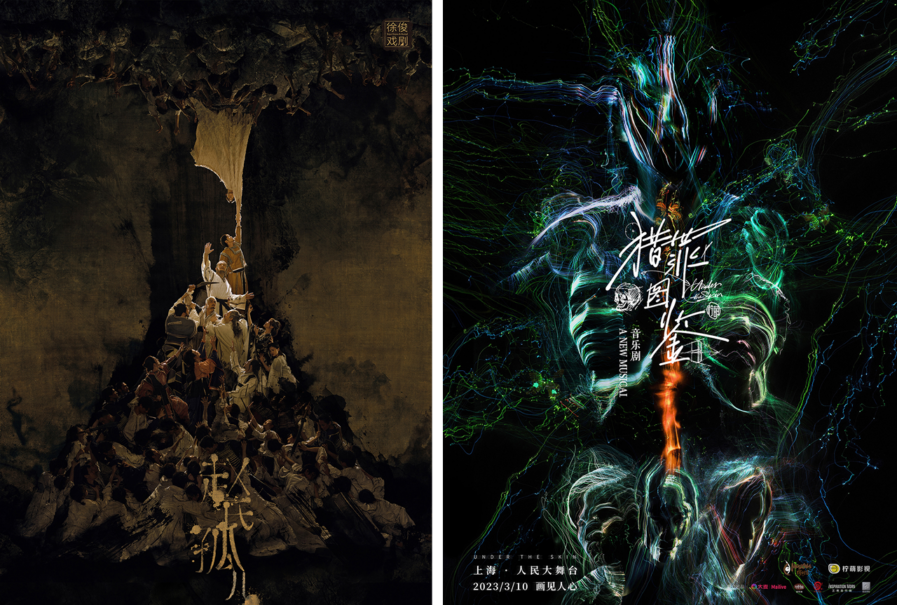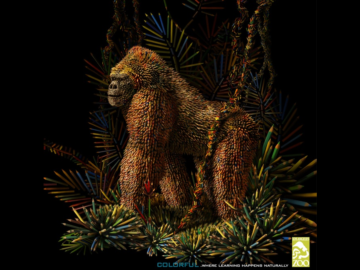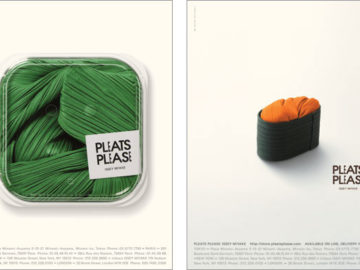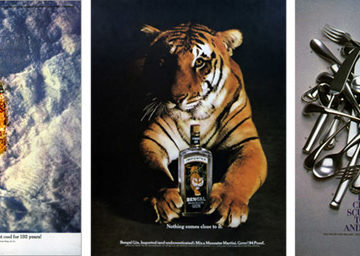Fusing Eastern and Western aesthetics in the heart of China’s bustling art scene, Pang Hao, art director at PangHao Art Studio, crafted key art for two theatrical projects. In each, “The Orphan of Zhao” (above, left) and “Under the Skin” (above, right) Pang earned top honors in the Graphis Advertising Awards 2024. Each piece, a meticulous blend of cultural narratives and emotive creativity, invites audiences into a visual world where classical Chinese tales and contemporary visual art collide, leading his studio to the forefront of a new era of visual storytelling.
By: Pang Hao, Art Director, PangHao Art Studio
The Orphan of Zhao
Taking inspiration from Ji Junxiang’s original story, The Orphan of Zhao, British playwright James Fenton adapted it into a play, which director Xu Jun then turned into a musical. It is considered a successful Chinese musical.
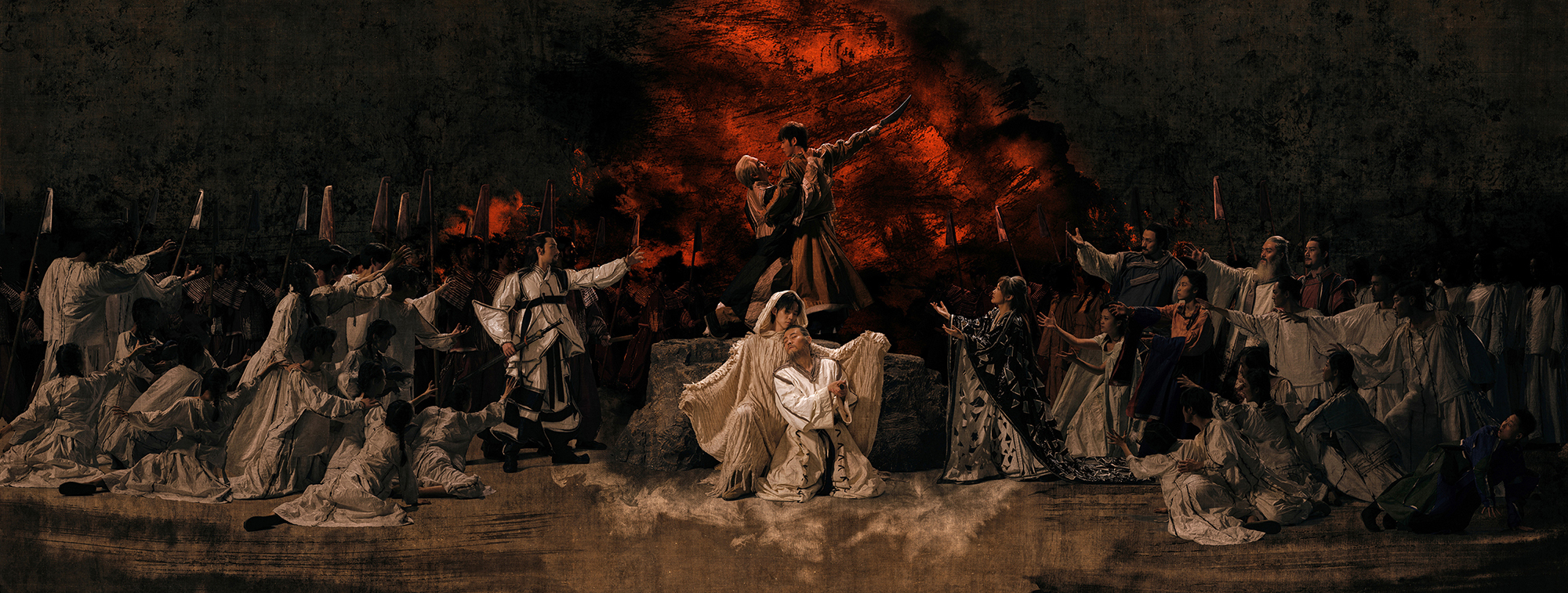
The Orphan of Zhao, sometimes called the Chinese Hamlet, dates back to the 4th century BC and is the first Chinese drama to be translated into Western languages. Set in the Spring and Autumn period of Chinese history (770-476 BC), the story is about Cheng Ying, a doctor who sacrifices his son to save the town’s influential Zhao family and other newborns. The orphan later learns of his secret upbringing and seeks revenge.
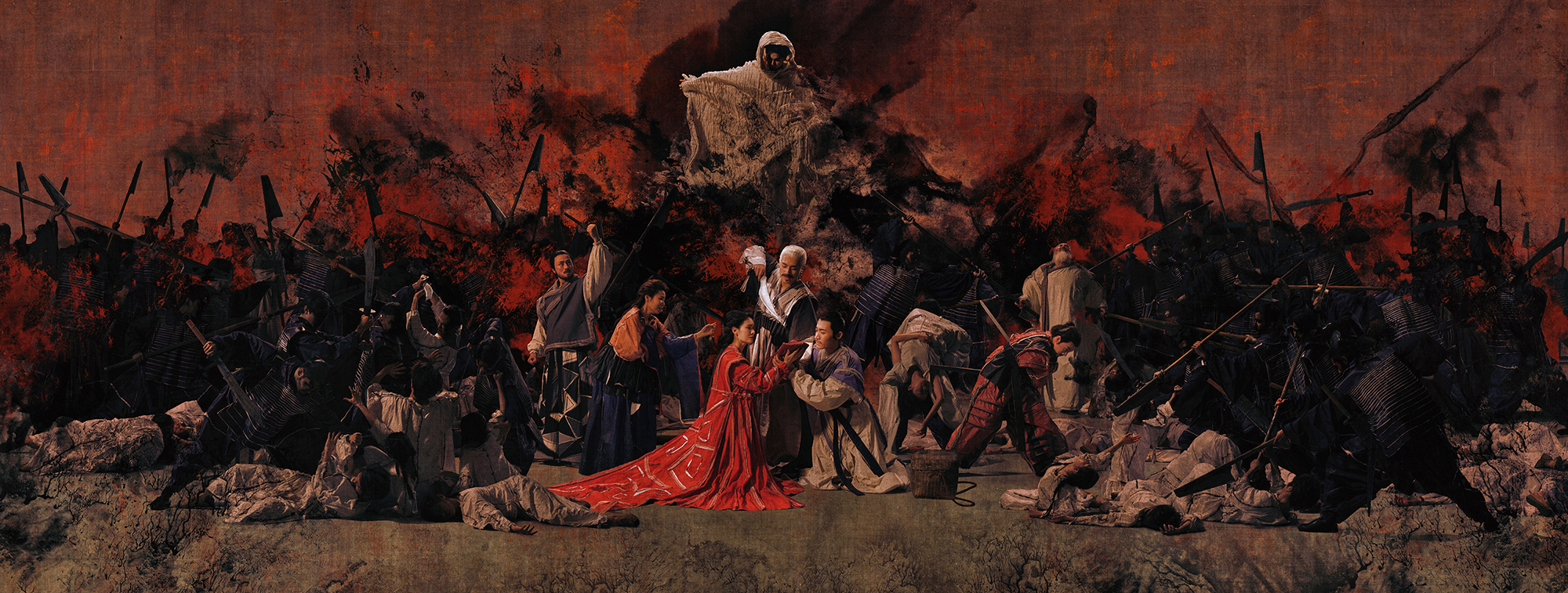
British playwrights constructed the script, while the director was Chinese. While creating the poster and key art, I attempted a visual style that blends Eastern and Western elements, distinct from traditional Chinese paintings’ scattered perspectives and macro narratives. In composition and narrative, I used the narrative style of Western religious paintings, freezing the flowing story in the same time and space. In the use of light, I adopted the lighting style of the Baroque school of painting, and in the background details, I used elements of Chinese ink and brushwork. The overall construction of the photography presents a three-dimensional sense of Western painting, creating a look that is Western from a distance but has details similar to Chinese ink painting. It also implies the dual philosophical perspectives of East and West contained in this musical.
As an independent visual art creation, from the early stage of creativity to the construction of photography to the later ink painting, all were independently completed by me, Pang Hao. This is an exploration and practice in visual arts and a perfect combination of commercial advertising and visual arts.
Under the Skin
1. “The Right Brain”
This artwork utilizes the flowing visual effects of light painting to simulate elements of human brain neurology, resembling the lines drawn by a forensic artist. These intricate neural elements collectively form the truth of things, representing the “simulated portrait artist’s” right-brain thinking mode. In my imagination, right-brain thinking is like a green “chemical reaction.” Hence, “visualizing the right brain” became the concept for this visual creation.
2. “The Plastic Surgery Room”
Two women who were sexually assaulted by their plastic surgeon team up to poison the perpetrator with nail polish.

3. “Codename M”
The enigmatic woman codenamed M is the ultimate killer that the protagonist forensic artist has been relentlessly searching for. The artwork depicts the removal of skin, muscle, and bone to reveal M’s true face, which is also the forensic artist’s method of solving the case.

4. “The Girl”
It is a love story between two girls who experienced school bullying. One of the girls commits suicide, and the other buries her skull in the mud of the school playground. Years later, the surviving girl becomes an art teacher at the same school and unearths the buried skull to use as a model for her art classes.

5. “The Studio”
This conceptual poster also serves as an interactive art installation titled “All-Seeing Eye” during the musical’s live performances—the visual installation attempts to construct a dualistic “observation” experience. The observer is placed within a framed space, and six surveillance cameras capture their every move from different angles and focal lengths. The objective recordings of the person’s subtle movements and expressions are then used to assemble a complete “face,” adding a subjective judgment to the act of “observation.” Through this continuous interplay of subjective and objective perspectives, the observer delves into the person’s inner self beneath their outward appearance.

In the poster’s depiction, I use a skeleton as the model, but the image captured by the surveillance cameras is a natural human body, representing the forensic artist’s perspective.
6. “The Boiling Sea”
The protagonist, a forensic artist, has a painful memory of drowning in the sea. These memories cloud his vision, preventing him from ever being able to draw the “ultimate enemy.” I use the reverse effect of light painting lines to simulate pencil strokes dispersing in water, forming the “crime clues” drawn by the forensic artist and juxtaposed against the other protagonist, the “police officer,” who is confronting these “crime clues.”

Artist Pang Hao, inspired by the painting “Along the River During the Qingming Festival,” began learning painting in his youth. The traditional Eastern culture and humanistic spirit are the inspirations for his work. He often uses photography, painting, installations, and other media to create, seeking new ways of expression and exploring the boundaries of digital-era visual arts. His work has been awarded the Graphis Platinum and Gold Awards, Clio Silver Award, and Paris Photography Silver Award.


